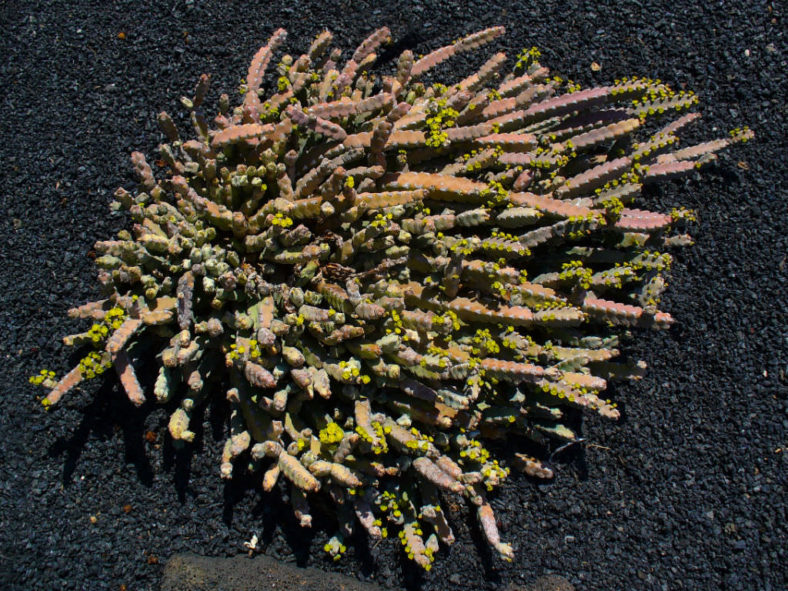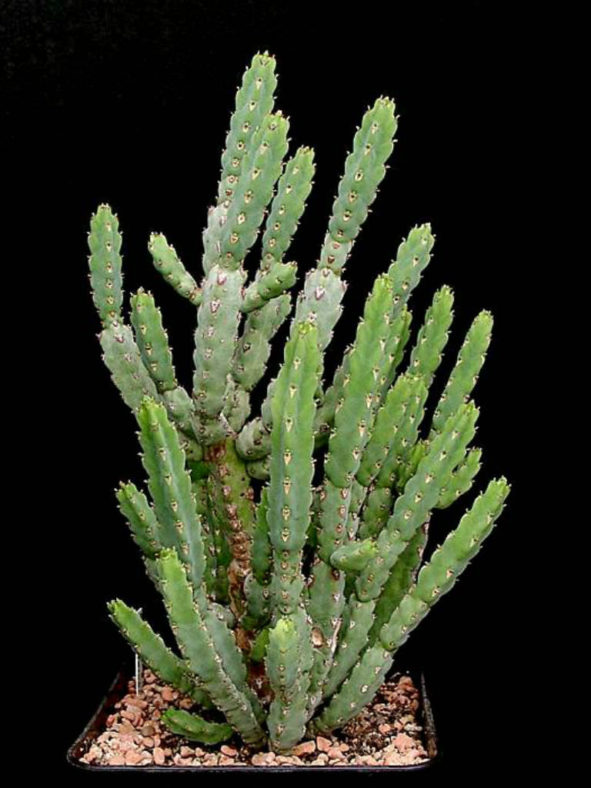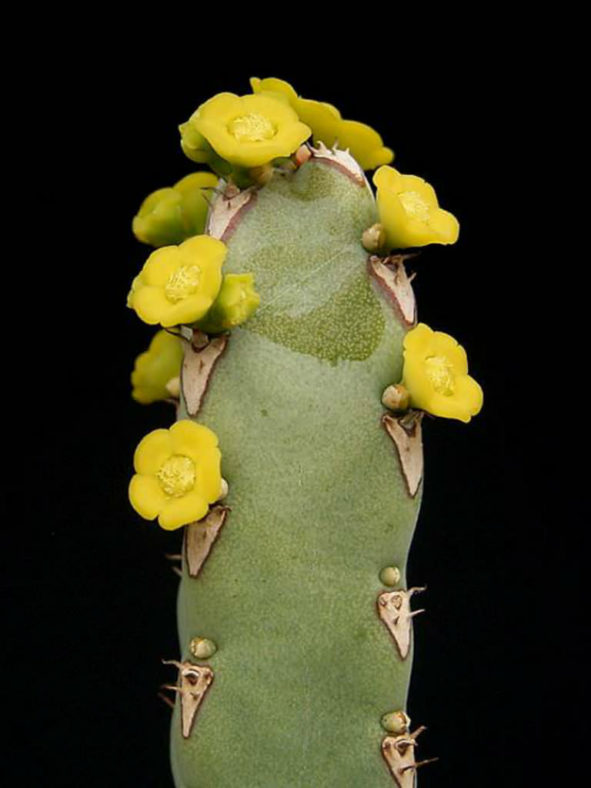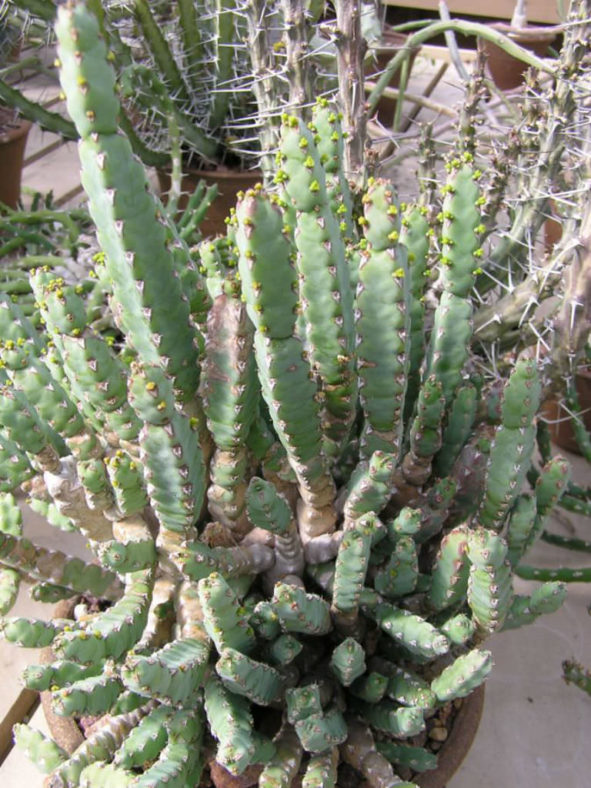Scientific Name
Euphorbia debilispina L.C.Leach
Scientific Classification
Family: Euphorbiaceae
Subfamily: Euphorbioideae
Tribe: Euphorbieae
Subtribe: Euphorbiinae
Genus: Euphorbia
Etymology
The specific epithet "debilispina (deb-il-ih-SPIN-uh)" means "weak-spined" and refers to the short, sometimes rudimentary spines.
Origin
Euphorbia debilispina is native to Zambia and Tanzania.
Description
Euphorbia debilispina is a spiny succulent shrub that can grow up to 8 inches (20 cm) tall, forming large, densely branched clumps. The stems are simple or branched, 4-angled, and grey-green to blue-green with a reddish tinge in full sun. They have brownish or whitish spine shields along the margins of the angles that bear short paired spines. The leaves are tiny and usually fall off pretty quickly.
The flowers appear from late winter to early spring. They are small, funnel-shaped, and yellow to yellow-green. The fruits are 3-lobed capsules.

How to Grow and Care for Euphorbia debilispina
Light: Most Euphorbias are sun lovers, but some will tolerate partial shade. Place your indoor Euphorbia debilispina on windows with southern or southeastern exposure. You may place the pot on the balcony or in the garden from spring to fall.
Soil: Euphorbias require well-drained soil. They even thrive in poor, dry soils. Use a commercial mixture formulated for cacti and succulents, or make your own potting mix.
Hardiness: High summer temperatures are not a problem for succulent Euphorbias, but minimum winter temperatures vary. Euphorbia debilispina can withstand temperatures as low as 30 to 50 °F (-1.1 to 10 °C), USDA hardiness zones 10a to 11b.
Watering: Succulent Euphorbias can survive drought, but that does not mean they need it. Water from spring to fall when the top inch (2.5 cm) of soil feels dry. Reduce watering in winter.
Fertilizing: Every Euphorbia will benefit from fertilizer. Apply a balanced fertilizer in a 10-10-10 NPK formulation, diluted to 1/4 strength weekly during the growing season.
Repotting: Euphorbias do not need to be repotted every year. However, when your Euphorbia debilispina is outgrowing its pot, it is time to repot the plant in a larger pot and give it a fresh potting mix.
Propagation: The easiest and fastest method of propagation for Euphorbia debilispina is by cuttings. Euphorbia debilispina can also be grown from seeds, but they can be difficult to germinate and even hard to find.
Learn more at How to Grow and Care for Euphorbia.
Toxicity of Euphorbia debilispina
All Euphorbias produce a toxic white milky sap that can irritate the skin and eyes. Therefore, keeping your Euphorbia debilispina away from children and pets is best.
Links
- Back to genus Euphorbia
- Succupedia: Browse succulents by Scientific Name, Common Name, Genus, Family, USDA Hardiness Zone, Origin, or cacti by Genus
Photo Gallery
Click on a photo to see a larger version.


